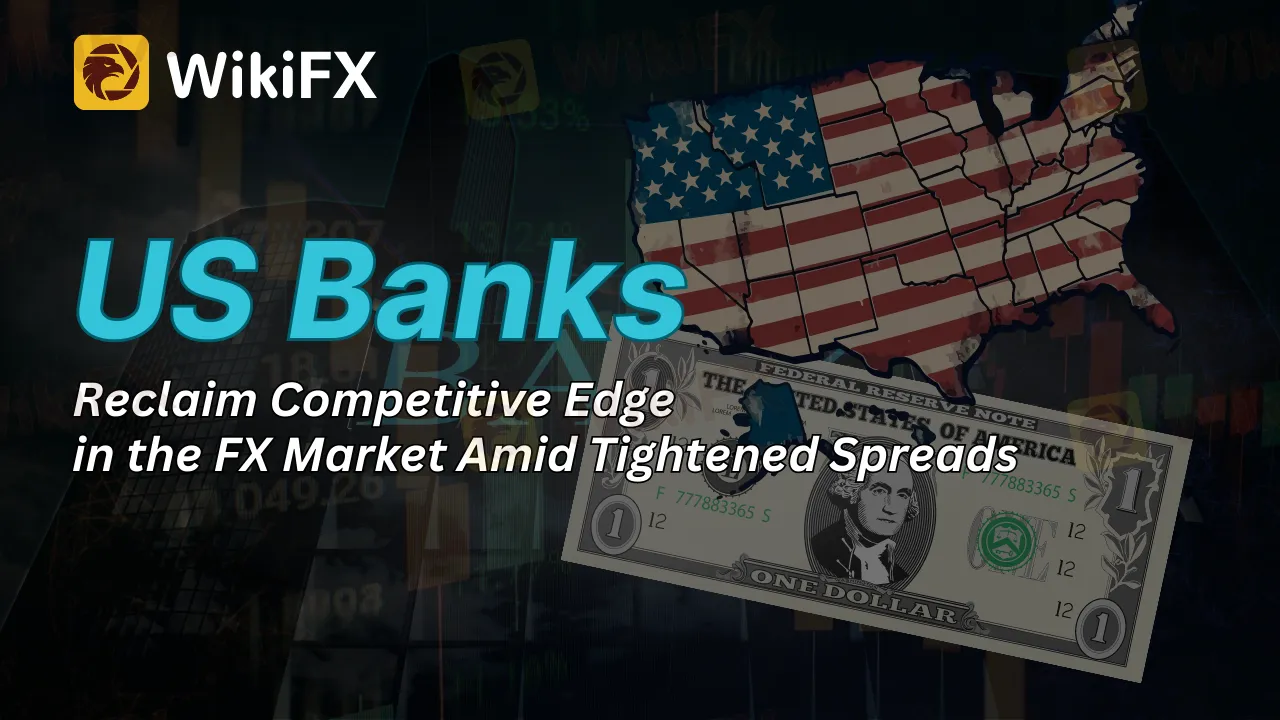简体中文
繁體中文
English
Pусский
日本語
ภาษาไทย
Tiếng Việt
Bahasa Indonesia
Español
हिन्दी
Filippiiniläinen
Français
Deutsch
Português
Türkçe
한국어
العربية
US Banks Reclaim Competitive Edge in the FX Market Amid Tightened Spreads
Abstract:Discover how US Banks are reshaping the FX market, narrowing spreads, and reclaiming their competitive edge amid SA-CCR implementation challenges.

In the dynamic and competitive world of foreign exchange (FX) swaps and forwards, US banks have been significantly reshaping the landscape over the past year. The catalyst for this transformation has been the strict implementation of the standardized approach to counterparty credit risk (SA-CCR), which has presented both challenges and opportunities for the sector.
Under the SA-CCR, US banks were compelled to charge wider spreads than their European and Canadian counterparts to account for the increased risk-weighted assets produced by their positions. At one point in March last year, the gap in spreads quoted for G10 FX swaps between US and European banks was a substantial 20 basis points, as indicated by data compiled by BestX, a renowned third-party transaction cost analysis provider.
This led to a decline in market share for several US banks, with industry giants such as Citi and JP Morgan experiencing a noticeable impact. The wider spreads placed these banks in a tough position in an already competitive environment, forcing them to innovate and devise strategies to cope with the heightened capital costs.
However, the landscape has changed noticeably this year. US banks have made strategic adjustments, effectively narrowing their swaps pricing. According to buy-side participants, while European banks' spreads remained static, US banks achieved a tighter pricing structure. Evidence provided by BestX corroborates this shift, revealing that the spread differential has significantly reduced to just 5bp.
The tightened spreads have yielded positive results for US banks, particularly in market share. Heavyweights like Bank of America, Goldman Sachs, Morgan Stanley, and Wells Fargo have seen a rise in the size of their FX forwards book during the first quarter of 2023, based on data from Counterparty Radar.

So, how did the US banks manage to normalize their prices in such a competitive environment?
One strategy has been to incentivize asset managers to collateralize their trades. While the SA-CCR penalizes non-cleared trades, collateralizing them provides a mitigating effect. Though there's no regulatory obligation for buy-side firms to post collateral on FX swaps and forwards, US banks have leveraged competitive pricing to encourage asset managers to sign credit support annexes.
Furthermore, US banks have shown marked improvement in managing trading costs. Dealers' interest in certain types of business has evolved, and they have adapted their spreads accordingly. Prior to this, such adaptation was not feasible due to the lack of granular, up-to-date data on risk-weight costs at banks. This new approach has allowed internal bank trading desks to access increased budgets, offering more competitive FX swaps pricing.
In addition, US banks have begun utilizing optimization vendors such as Osttra and Capitolis more efficiently. The latter recently completed an optimization run with a record 20 firms, successfully reducing $341 billion in notional used for the SA-CCR calculation.
While it is suspected that US banks have developed other means to offset capital costs, these measures may exist in areas of the trade lifecycle that are not typically analyzed in buy-side transaction cost reports. As a result, while not all US banks are affected equally, each has been dealing with the SA-CCR in its own unique way. This underscores the resilience and adaptability of US banks and suggests that the temporary upper hand enjoyed by EU and Canadian banks could indeed be short-lived.
Stay up-to-date with the latest developments in the world of FX trading by installing the WikiFX App on your smartphone. Download the App here: https://www.wikifx.com/en/download.html

Disclaimer:
The views in this article only represent the author's personal views, and do not constitute investment advice on this platform. This platform does not guarantee the accuracy, completeness and timeliness of the information in the article, and will not be liable for any loss caused by the use of or reliance on the information in the article.
Related broker
Read more

What the Movie Margin Call Taught Traders About Risk and Timing
The 2011 film Margin Call offers a gripping portrayal of the early hours of the 2008 financial crisis, set within a Wall Street investment firm. While the film is a fictionalised account, its lessons resonate strongly with traders and finance professionals. For one trader, watching the film had a lasting impact, shaping how they approached risk, decision-making, and the harsh realities of the financial world.

Why More Traders Are Turning to Proprietary Firms for Success
Over the past decade, one particular avenue has gained significant popularity: proprietary trading, or prop trading. As more traders seek to maximize their earning potential while managing risk, many are turning to proprietary firms for the resources, capital, and opportunities they offer. In this article, we’ll explore why an increasing number of traders are choosing proprietary trading firms as their preferred platform for success.

Day Trading Guide: Key Considerations
How does day trading balance freedom and precision in fast-moving markets? Learn key strategies to navigate risks and seize intraday opportunities effectively.

What Determines Currency Prices?
The price of currency directly impacts investor returns. Understanding the underlying causes of currency fluctuations can help investors make more informed decisions in the foreign exchange market.
WikiFX Broker
Latest News
AI Fraud Awareness Campaign: "We're Not All F**ked"
Crypto.com Delists USDT and 9 Tokens to Comply with MiCA Regulations
How to Use Financial News for Forex Trading?
Fake ‘cyber fraud online complaint’ website Exposed!
Day Trading Guide: Key Considerations
NAGA Launches CryptoX: Zero Fees, 24/7 Crypto Trading
Scam Alert: 7 Brokers You Need to Avoid
AvaTrade Launches Advanced Automated Trading Tools AvaSocial and DupliTrade
What Determines Currency Prices?
Why More Traders Are Turning to Proprietary Firms for Success
Currency Calculator






